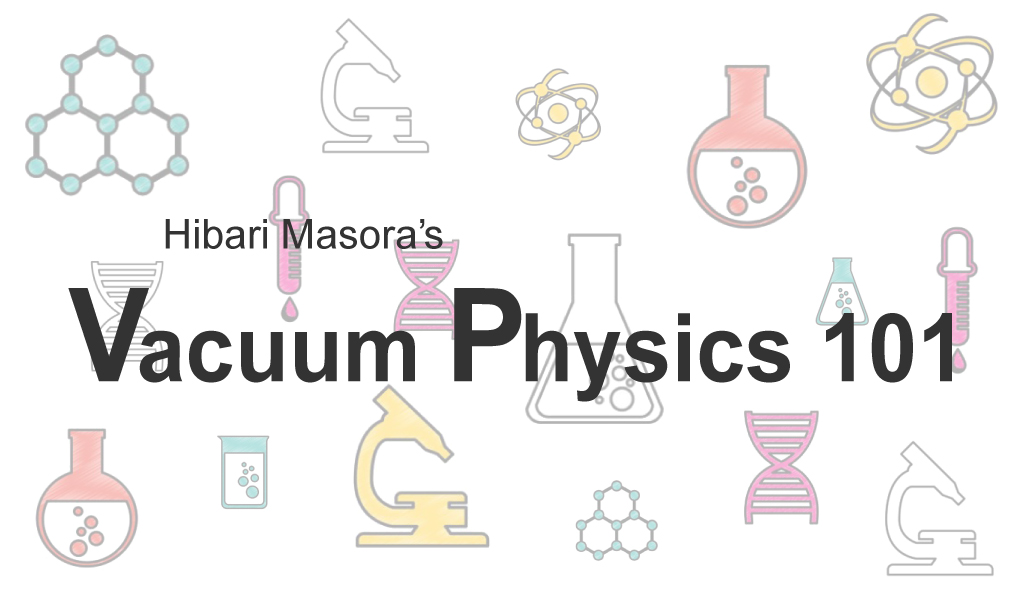Hibari Masora’s Vacuum Physics 101, Lesson 1
Hi! I’m Hibari Masora. In my Vacuum Physics 101 course, you’ll learn all about various aspects of vacuums.My name means “a lark in a vacuum” in Japanese, referring to the famous anecdote that Robert Boyle, the scientist behind Boyle’s law, experimented with larks to prove that sound doesn’t travel in a vacuum. OK, it’s learning time! ♪
Did you know that a vacuum isn’t empty space?

the 27-year-old instructor of Vacuum Physics 101. She was born and raised in Chigasaki, the birthplace of surfing in Japan – but she can’t surf.
When you hear the word “vacuum,” what comes to mind? Merriam-Webster defines a vacuum as “a space absolutely devoid of matter,” and as
Another philosopher named Aristotle famously opposed this theory and proposed one his own, called horror vacui, which states that “nature abhors a vacuum.” Did you know about this famous story?Trying to comprehend “a space absolutely devoid of matter” may be just as difficult for us as it was for the ancient Greeks.
But don’t worry – the science of vacuum technology is much easier to understand. Japanese Industrial Standards (JIS) defines a vacuum as “a state of space filled with gas whose pressure is lower than atmospheric pressure, not the pressure itself.”Using more intuitive words like “low pressure” and “reduced pressure,” we can define a vacuum as “a low pressure state of reduced pressure compared to the atmosphere.” In other words, in vacuum technology the term vacuum refers not to empty space, but to “a low-pressure state in which matter remains in the atmosphere to some extent.”
But that sounds a bit confusing. Here’s an explanation that should help clear things up: Air pressure is lower in high places. For example, the air pressure at the top of Mount Everest is only one-third of the pressure at the earth’s surface. However, we wouldn’t call this a vacuum state. The top of Mt. Everest isn’t what JIS calls a “specific space.” Thus, it’s not accurate to say that a vacuum is just a low-pressure state. Vacuum technology combines both vacuums and technology, and in this field, scientists have decided to consider a vacuum to be a low-pressure state created by a vacuum pump.
This is why a vacuum isn’t empty space. Got it?
Glossary
Japanese Industrial Standards (JIS)
Based on the Industrial Standardization Law established and enacted in 1949, JIS specifies national standards as stipulated by relevant authorities such as the Minister of Economy, Trade and Industry and the Minister of Land, Infrastructure and Transport, following deliberation by the Japanese Industrial Standards Committee.

